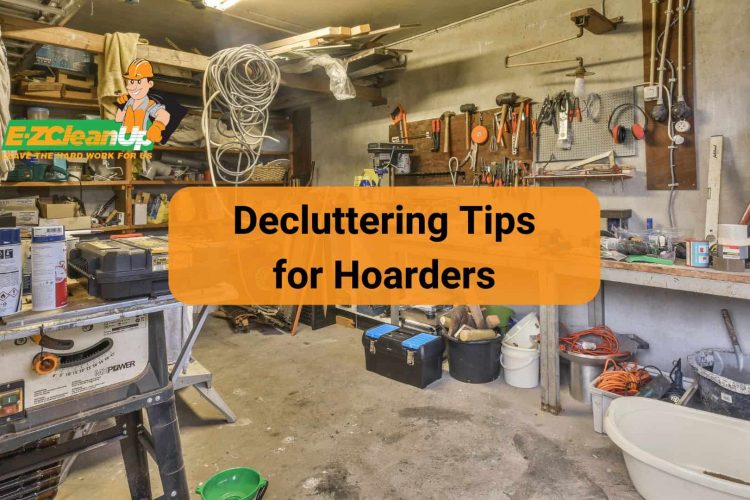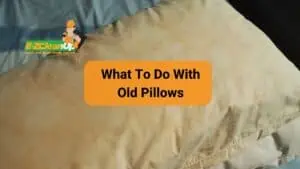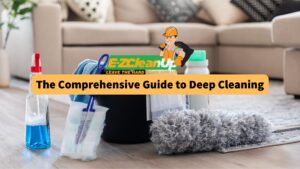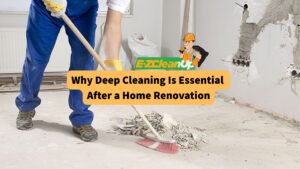Starting small and focusing on one area at a time can empower hoarders to begin decluttering without feeling overwhelmed. Setting achievable goals, sorting items into categories, and utilizing proven methods can provide structured paths towards reclaiming space and enhancing well-being.
This article will expand on and explain further effective decluttering tips for hoarders.
Tip #1: Recognizing the Need for Change
Change begins with understanding our habits and their impact on our lives. Before you can do something about the problem, it is crucial to understand what it is and where it is coming from.
Understanding Hoarding vs. Collecting
Hoarding and collecting are distinct behaviors often mistaken for one another. Collecting involves acquiring specific items that form meaningful, often thematic, groupings. Collectors display and organize their items meticulously. They get happiness and fulfillment from their pursuits.
Hoarding, by contrast, is characterized by the indiscriminate acquisition of items. This often leads to clutter that obstructs living spaces and causes distress. Hoarders often face social and occupational impairments, driven by emotional attachments to items, regardless of their actual value.
Collecting enriches the collector’s life. It offers aesthetic pleasure, historical connection, and sometimes financial gain, without overshadowing other life aspects.

Identifying the Impact of Hoarding on Daily Life
The impact of hoarding on daily life goes beyond clutter. It affects the functionality of living spaces and leads to potential safety hazards. Hoarding can significantly affect mental health, causing anxiety, stress, and isolation.
The disorganized nature of the clutter prevents the use of spaces as intended, disrupting normal daily activities and routines. The clutter can also strain relationships with family and friends. It can further isolate individuals from their social networks.
Acknowledging the Emotional Aspect of Decluttering
Decluttering, especially for hoarders, is not merely a physical task but an emotional journey. It involves confronting the reasons behind the accumulation of items, such as emotional attachment, fear of waste, or beliefs about future utility.
The process requires acknowledging these attachments and fears, understanding them, and ultimately finding the strength to let go. This journey can be challenging, but also liberating. It can lead to a sense of relief and newfound freedom in one’s own space.
Tip #2: Setting Achievable Goals
While intimidating, with the right approach, it is entirely possible to reclaim your living space and improve your quality of life. Here’s how to set achievable goals and start on the path to a clutter-free home.
Defining Clear, Manageable Objectives
After acknowledging the problem, you must set realistic goals. Avoid the trap of wanting to tackle everything at once. Start with one specific area or room and set a manageable goal, such as decluttering a single room or area within a certain timeframe.
Prioritizing Areas for Decluttering
Prioritize the areas of your home that need decluttering. Begin with the least cluttered area to build confidence, and gradually work your way to more challenging spaces. Creating a room-by-room checklist can serve as a roadmap. This will help you stay organized and focused as you tackle each area systematically.
Establishing a Realistic Timeline
Rather than setting a deadline to declutter your entire home in an unrealistically short period, break the process into smaller, more manageable tasks. For instance, dedicate a couple of weeks to each room or category.
Set a goal such as “declutter my entire home in the next 3 months.” This approach gives you sufficient time to carefully sort through your belongings without rushing the process.
Tip #3: Creating a Supportive Environment
Understanding the emotional complexities of hoarding and approaching the process with empathy, patience, and respect will pave the way for more effective and compassionate assistance.
Involving Friends or Family for Support
Involving friends or family in the decluttering process can provide invaluable emotional and physical support. However, it’s crucial to establish a supportive and non-judgmental environment.
This means actively listening to the hoarder’s concerns, showing empathy for their emotional attachments to possessions, and validating their feelings. Celebrating small victories together can make the process feel less overwhelming and more manageable.
Considering Professional Help When Necessary
Professional help, such as therapists or professional organizers who specialize in hoarding, can offer the guidance and support needed to navigate the complexities of decluttering.
They bring not only expertise in organizing but also an understanding of the psychological aspects of hoarding. Professional help can provide structure to the decluttering process, making it more manageable for the hoarder.
Ensuring a Non-Judgmental Approach
Hoarders often feel embarrassed or ashamed of their situation. Criticism or negative comments can make these feelings worse and block their progress. Instead, approach the individual with respect, understanding, and patience.
Building trust is important. Empower them to make decisions about their belongings at their own pace. This includes avoiding forcing your own agenda and instead assisting them in making choices that they are comfortable with.
Emphasize the goal of creating a safe and comfortable living environment, rather than forcing the hoarder to get rid of everything they own. Recognize that decluttering is a gradual process and avoid rushing or pressuring the hoarder, as this can lead to resistance and heightened anxiety.
Tip #4: Learning about the Strategies for Starting the Decluttering Process
Beginning the decluttering process can be particularly challenging for hoarders. Here are strategies to ease into the decluttering process effectively.
The Five-Minute Rule for Initial Engagement
One of the simplest ways to start decluttering is by applying the Five-Minute Rule. This method encourages taking small, manageable steps by decluttering for just five minutes at a time. This method proves particularly effective for hoarders, as it allows them to make progress without the process feeling intimidating.
Sorting Items into Distinct Categories
Sorting items into categories is a fundamental step in organizing your space. When beginning the decluttering process, create distinct piles or sections for items to keep, donate, discard, or sell.
This categorization helps in making decisions about what to do with each item. Having a clear system for sorting can make the decluttering journey feel less chaotic and more structured.

Using the “One-Item-a-Day” Method for Gradual Decluttering
For those who find the idea of decluttering especially overwhelming, the “One-Item-a-Day” method can be a gentle way to start. This approach involves choosing one item each day to throw away, donate, or recycle.
It’s a slow but steady method that can help reduce the amount of clutter over time without the process feeling too abrupt or overwhelming. This method is particularly useful for hoarders who may have a strong emotional attachment to their possessions, as it allows them to gradually adjust to the idea of letting go.
Tip #5: Dealing with Emotional Attachment to Items
Decluttering for hoarders often involves dealing with the complex landscape of emotional attachments to possessions. Understanding and managing these attachments can make the decluttering process more manageable and meaningful.
Understanding the Sentimental Value of Possessions
The sentimental value of items often stems from personal history, memories, or associations with loved ones. Recognizing that emotional attachments can sometimes hold us back from making practical decisions about what to keep and what to let go of is crucial.
Items can become symbols of past experiences, relationships, or periods of life. These factors make them hard to part with.
Methods for Letting Go of Emotionally Charged Items
One effective method for dealing with sentimental items is to take photographs of them. This way, you can preserve the memory without keeping the physical item.
Additionally, setting physical limits on sentimental clutter, such as dedicating a single memory box for keepsakes, can help manage the amount of emotional clutter you keep. This approach encourages making intentional decisions about what truly holds meaning and deserves space in your life.
Creating a Memory Box for Special Keepsakes
A memory box serves as a collection of items that hold significant sentimental value. By limiting keepsakes to what fits within a box, you can prioritize the most meaningful items while acknowledging the necessity of letting go of others.
This process allows for a practical approach to keeping memories alive without allowing possessions to overwhelm your space. The key is to be selective and intentional about what you choose to keep. It ensures that each item in the memory box genuinely contributes to preserving cherished memories.
Tip #6: Practical Decluttering Techniques
Tackling clutter, especially for hoarders, requires practical and manageable strategies. Implementing organized systems and rules can transform overwhelming chaos into a streamlined process.
Implementing the Four-Box Method for Organization
The Four-Box Method is an efficient way to declutter by sorting items into four categories: Keep, Donate, Trash, and Relocate. This method encourages thoughtful consideration of each item’s value and purpose in your life.
It’s crucial to address each item individually, asking key questions like its frequency of use, sentimental attachment, and whether it genuinely sparks joy. This systematic approach not only helps in decluttering effectively but also in maintaining a tidy living space.
Establishing a “No New Items” Rule to Prevent Accumulation
To sustain the efforts of decluttering, it’s beneficial to adopt a “no new items” rule. This guideline helps prevent the re-accumulation of clutter by ensuring that for every new item brought into the home, at least one item is removed.
By adhering to this rule, you cultivate a disciplined mindset towards shopping and possessions. This will keep the clutter at bay and ensure that every item in your home serves a purpose.
Digital Decluttering for Electronic Hoarding
In today’s digital age, clutter isn’t limited to physical items but extends to digital spaces as well. Digital decluttering involves organizing and purging unnecessary digital files, emails, and applications that consume valuable storage and mental space.
This process includes unsubscribing from unneeded email lists, deleting old or redundant files, and organizing digital documents into clearly labeled folders. Regular digital decluttering sessions help maintain an organized digital environment.
Tip #7: Disposing of Decluttered Items Responsibly
Successfully decluttering your space not only involves sorting through your possessions but also ensuring that the items you no longer need are disposed of responsibly. Here’s how you can contribute positively to the environment and community as you declutter.
Donating Items That Can Still Be Used
Items in good condition that you no longer need can find a new home and purpose. Organizations like Habitat for Humanity ReStores are ideal for donating gently used furniture, appliances, housewares, and building materials.
These donations support Habitat’s work in providing affordable housing. Remember to confirm donation hours and inquire if large item pickup is available. This option simplifies the donation process for bulky objects.

Recycling Options for Various Materials
Sorting items into categories such as electronics, textiles, and glass jars can help identify recycling options. Your local recycling center often has specific collection points for e-waste.
Textiles, even if they are not in good condition for second-hand stores, can be repurposed as rags for mechanics or shelters or recycled through specific programs. Glass jars can be reused or given to bulk stores for others to use. It’s crucial to consider the material of your items and research local recycling guidelines to ensure proper disposal.
Proper Disposal of Non-recyclable Waste
For items that cannot be reused or recycled, it’s essential to dispose of them responsibly. Before discarding anything, assess whether it can be fixed or cleaned. If an item is beyond repair and cannot be recycled, ensure it’s disposed of in accordance with your local waste management policies to minimize environmental impact.
Sometimes, specialty recycling centers or municipal programs offer disposal services for items like mattresses or hazardous waste. They help prevent them from ending up in landfills.

Start Fresh with EZ
The first step towards decluttering is often the hardest, especially when faced with a disposal dilemma. EZ CleanUp provides a wide range of services to effortlessly clear your space, from residential cleanouts to construction site cleanups.
Reach out to us and embrace a fresh start.













